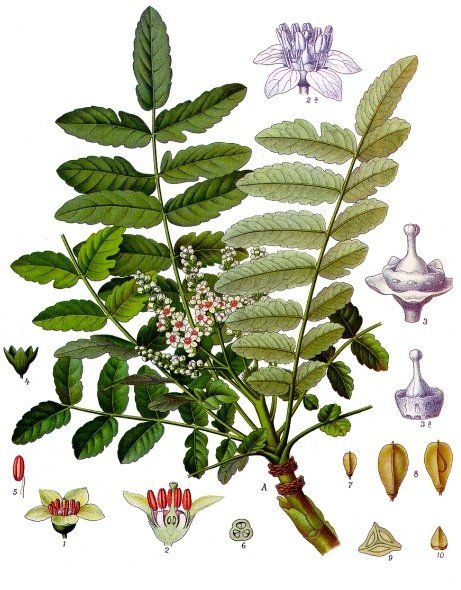Sightings
Jo Freeman: There’s Plenty To Do at the RNC – If You Have the Right Credentials
by Jo Freeman
Every national nominating convention has plenty of auxiliary events, some authorized, some not. Getting space can be a challenge; getting the word out even more so. But they do it nonetheless. Press were given a RNC 2024 Master Event Calendar, which was updated a few days later. Events began on Sunday and ended on Thursday. The actual convention sessions were just one item on the list. The calendar said if an event was Open or Closed to press, and also whom to contact to register. I’m going to describe some of the events, including a couple I went to, and a couple I was turned away from.
Since my focus is on women, I obviously wanted to go to those events – if I could.
The National Federation of Republican Women is the largest grassroots Republican women's organization in the country with hundreds of clubs. Founded in 1938, its members made the phone calls and knocked on the doors that elected Republican candidates for decades. It’s Tuesday luncheon featured Arkansas Governor Sarah Sanders. The Master Calendar said it was SOLD OUT and they wouldn’t let me in. I was able to get into their lounge at the Fiserv Forum Wednesday evening, where I was repeatedly asked if I was a member, and if not, would I join. “I’m press,” I said. “I can’t join anything partisan.” I then said: “What brings you here?” On hearing that, finding anyone willing to chat with me was like pulling teeth.
Moms for Liberty met in a concert hall that afternoon. I had pre-registered, and I got in. From high in a balcony seat I listened to several people talk about the evils of transgenderism. It’s webpage says WE BELIEVE Power Belongs to the People. Sound Familiar? With a focus is on parental rights, it wants to “STOP WOKE indoctrination.”
Tuesday I went to “The New Mavericks” reception co-hosted by the Black Republican Mayors Association and the Georgia Republican Party. They honored Sen. Tim Scott, four Congressmen and two Georgia delegates – all male. There was only one mayor on stage, from Aurora, IL. The chair of the Georgia Republican Party was the one white man on the stage. At that event, women served; they didn’t speak. The RNC reported that 55 delegates to the 2024 convention are Black, up from 18 in 2016.
I missed the Independent Women’s Forum toast to “Women Who Make Our Country Great” because I went to Convention Fest: The Official Delegate Experience, which was held in the streets outside the Fiserve Forum and Baird Hall as well as some space inside Baird. To get to that one you not only needed a credential of some sort, but a USSS pass (which I have).
Concerned Women for America parked its pink bus across from the Baird Center the week before the RNC. No one was home. When Convention Fest opened on Tuesday afternoon, they set up a pink tent, from which its leaders preached to whomever passed by. It calls itself “the nation’s largest public policy women’s organization” but its focus is evangelical Christian. The slogan on the side of its pink bus captures this emphasis: “She Prays, She Votes.” A prayer precedes each sermon.
 Rose Madeline Mula Writes: How Come ... ?
Rose Madeline Mula Writes: How Come ... ?
Rose Madeline Mula Writes: Why does my computer crash only when I’m behind deadline on an important project and not when I’m playing solitaire — especially since I spend much more time playing games than working. And can wine connoisseurs really detect undertones of leather, tea, oak, and dozens of other essences and aromas? When they describe a certain vintage as having “a good nose” or “legs,” are they putting me on? And when they toss out adjectives like “assertive,” “attractive,” “graceful,” and “elegant,” are they really describing the wine or the waitress pouring it? If haste makes waste, how come he who hesitates is lost? And why should we keep our noses to the grindstone if all work and no play makes Jack a dull boy? No wonder I’m an insomniac. How can I get to sleep when I keep trying to solve life’s little puzzles—like… How come the label on my sleeping pills warns, “May cause drowsiness”? Isn’t that the point? more »
 Kaiser Health News: Paying Billions for Controversial Alzheimer’s Drug? How About Funding This Instead?
Kaiser Health News: Paying Billions for Controversial Alzheimer’s Drug? How About Funding This Instead?
Aduhelm, a new Alzheimer’s drug approved by the Food and Drug Administration last month, could be prescribed to 1 million to 2 million patients a year, even if conservative criteria were used, according to Biogen and Eisai, the companies behind the drug. The total annual price tag would come to $56 billion if the average list price, $56,000, is applied to the lower end of the companies’ estimate. That’s a huge sum by any measure — more than the annual budget for the National Institutes of Health (almost $43 billion this year). Yet there’s considerable uncertainty about Aduhelm’s clinical benefits, fueling controversy over its approval. The FDA has acknowledged it’s not clear whether the medication will actually slow the progression of Alzheimer’s disease or by how much. more »
 UC Berkeley Chancellor Carol Christ: ‘I always felt like a pioneer’
UC Berkeley Chancellor Carol Christ: ‘I always felt like a pioneer’
Carol Christ: When I joined the faculty, only 3% of the faculty were women. When I joined the English department, there were 84 faculty in the English department — it was much bigger then than it is now — and there were four women. I was the fourth woman. And I remember whenever I went to an office, people didn’t believe I was a faculty member. Carol Clover: Or, when I went to Harvard, people always thought that I was a secretary in my office. They would just walk in and say, “Would you please type this for me and have it for tomorrow?” Anne Brice: What would you say? Carol Clover: It would be a nice conversation. They were usually apologetic. It was just the way things were." more »
 Lynn Hershman Leeson: Who Has Celebrated Her 80th Birthday and a New Exhibition, TWISTED, at The New Museum in New York City
Lynn Hershman Leeson: Who Has Celebrated Her 80th Birthday and a New Exhibition, TWISTED, at The New Museum in New York City
For over fifty years, Lynn Hershman Leeson has created an innovative and prescient body of work that mines the intersections of technology and the self. Known for her groundbreaking contributions to media art, Hershman Leeson has consistently worked with the latest technologies, from Artificial Intelligence to DNA programming, often anticipating the impact of technological developments on society. As the artist posited in 1998, “Imagine a world in which there is a blurring between the soul and the chip, a world in which artificially implanted DNA is genetically bred to create an enlightened and self-replicating intelligent machine, which perhaps uses a human body as a vehicle for mobility.” more »






